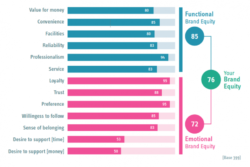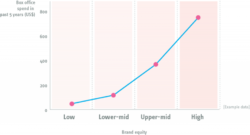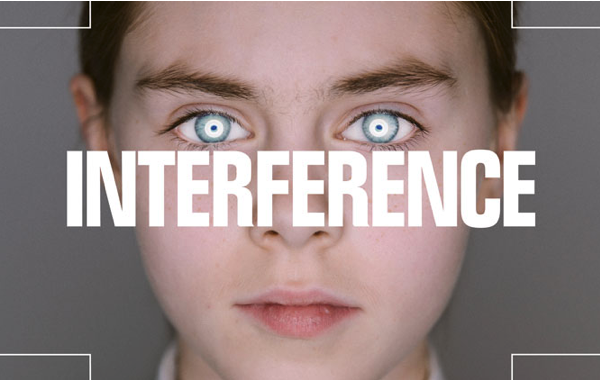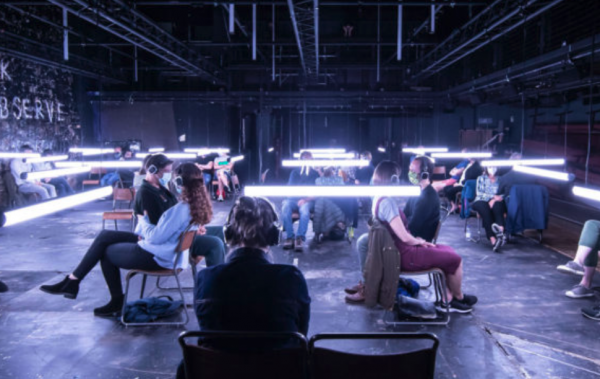- What We Do
- Understanding your audience
- Engaging new audiences
- Designing experiences
- Building loyalty
Building Brand Equity
We believe that building emotional brand equity holds the key to deeper relationships and meeting heightened expectations.
Audience expectations are changing
From MHM’s extensive primary research into museum and gallery audiences, it is becoming increasingly apparent that expectations are changing. The public expects greater audience focus from arts organisations than ever before. Functionality is a basic expectation – audience engagement is the new standard.
We believe that building emotional brand equity holds the key to deeper relationships and meeting heightened expectations. Therefore we need tools to understand, measure and grow emotional brand equity.
Rather than remaining content with the distant and passive relationship they were expected to have with organisations in the past, the public now expects organisations to:
- Be more democratic.
- Interactively engage with individuals and communities.
- Engage in a dialogue with visitors – both physical and virtual.
- Offer personalised experiences.
- Speak with multiple voices.
- Focus on providing self-development opportunities.
- Be open, accessible, relevant, relatable and engaging.
But they still expect organisations to remain artistic leaders, and true to their vision. The audience has never been more primed to take part in shaping the arts organisations of the future. They have never been more in tune with artistic principles. As a result, organisations need to think creatively about tangible audience engagement to keep up with audience expectations. For example when doing focus groups five years ago, we would hear constant gripes about how interactive displays ‘weren’t working’. But now, functionality and interactivity is simply expected. It is the social, intellectual, emotional and spiritual outcomes an interactive experience can provide which sets a good museum experience aside from the rest.
However, too many organisations are trying to shortcut these steps by providing quick fire audience engagement opportunities such as price-driven, rather than value-driven, Membership schemes. Coinciding with the economic downturn, these schemes have created swathes of transactional members on the look-out for the biggest savings. They aren’t venue loyalists. Audiences fly from all over the world to attend blockbuster exhibitions and Membership is the best way to guarantee a ticket. This creates one time, not first time, Members. This can mean Member attrition on an industrial scale. We believe that building emotional brand equity holds the key to deeper relationships and meeting heightened expectations.
Earning emotional brand equity
Increasing audience engagement and demonstrating greater audience focus in light of shifting expectations is dependent on building brand equity. You can measure brand equity, by different audiences, and create strategies to build on brand blind spots.
At MHM, we believe that brand equity is made up of two distinct halves: Functional Brand Equity and Emotional Brand Equity.
Functional brand equity
This is the practical side of brand equity – the left brain. It may or may not get you noticed. In the past, we used to be able to win on this alone. Functional Brand Equity refers to the tangible, basic elements of the audience experience. It includes:
Value for money
Reliability
Professionalism
Service
Facilities
ConvenienceYou can’t expect to increase emotional brand equity if the audience can’t trust you with the basics first. You are unlikely to deliver unexpected benefits if the audience can only think about the uncomfortable seats or rude bar staff.
Emotional brand equity
Emotional brand equity is at the heart of audience relationships. While Functional Brand Equity is more tangible and rational, emotional brand equity is more perceptual, drawing on attitudes, feelings and imagination. This is your right brain. It includes:
Loyalty
Trust
Preference
Willingness to follow
Sense of belonging
Desire to supportOur research shows that some of our most regular attenders will actually have low emotional brand equity. We mustn’t confuse frequency with loyalty. We can plan, build, orchestrate and actively grow these dimensions. And using a simple set of questions, we can measure them.

Growing emotional brand equity isn’t just good for the artistic health of an organisation, it has tangible and financial benefits. Our research in the United States shows that there is a clear correlation between increased brand equity and spend at the box office.

We can build brand equity by:
- Using sympathetic pricing
- Inviting donors to design appeals
- Inviting Members to design Member products
- Creating one off volunteer opportunities, and ask volunteers to design them
- Rewarding silent supporters: don’t assume your most regular visitors are your most loyal supporters. Identify your current ‘silent supporters’ and give them the opportunity to be online and offline philanthropists
- Consider a Membership and donor ‘triage’ service.
Three key takeaways
- The supporter journey isn’t a straight choice between a transactional or an emotional benefits systems: the two can, and should, coexist
- But emotional messages need to be communicated early, and at every opportunity, to prevent ‘freezing’ audiences in a transactional state
- Empower supporters (Members, Followers, Donors) to craft the perfect system for your organisation.
Related content
Learn moreBrand development
Programme of workshops, strategic coaching and modelling exercises to help you distil who you are and what you stand for.
Learn moreArticulating National Theatre of Scotland’s brand
National Theatre of Scotland is audacious, ambitious and embracing. Their values fit perfectly with Stimulation but, we discovered, people in this Culture Segment weren't aware of the scale, diversity and innovation in National Theatre of Scotland’s work.
Learn moreInsight: Donmar Warehouse
During the pandemic, The Donmar Warehouse experimented with new ways to continue telling their stories virtually. To support them, MHM was asked to evaluate these experiences from the audiences' perceptive. This research proved crucial for helping the Donmar brand adapt to the pandemic and support potential funding bids and programme planning.
Add your details below
Want to chat more about your brand?
Please fill out the form and one of our brand experts will be in touch.
- Engaging new audiences
- Understanding your audience


